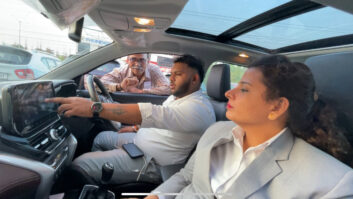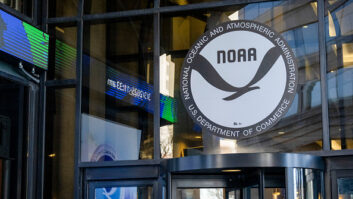Excerpts from prepared remarks by FCC Commissioner Mignon L. Clyburn to the 35th Annual Community Radio Conference, held by the National Federation of Community Broadcasters in St. Paul, Minn., in June.

Commissioner Mignon Clyburn. ‘NFCB should explore with its members the possibility of entering into partnerships with commercial and NCE stations to program HD2 and HD3 channels.’ I have the pleasure of appearing before you today knowing that the commission is trying to do its part to assist in the growth of community radio. … One great example is the strides we are now making in tribal radio. … The commission is also finally plowing ahead with the 2007 NCE FM window. It is safe to say that you can expect a flurry of point system orders from the commission over the next six months. …
Finally, work on the low-power front seems as likely as ever to pay off. Currently, there is an order circulating among the commissioners at the FCC regarding whether to reconsider the previously imposed translation application cap of 10. I will continue to advocate swift movement on this order, as it is a key step toward the next LPFM window. …
I am also optimistic that Congress will act to permit the licensing of new community stations under extremely flexible FM translator-type protection standards. Should Congress pass the Local Community Radio Act, we could realize a unique opportunity to license a great number — many hundreds — of new low-powered community-oriented radio stations.
The House of Representatives passed this legislation in December, and a companion measure has been reported out of committee and is pending before the full Senate. The proposed rules would create the first opportunity to bring LPFM stations to major markets. …
With all of these positive developments underway or in the works, I wanted to touch on three additional areas that I believe can lead to growth in community radio. …
Digital partnerships
I do not believe that community broadcasters should be tied only to your medium. …The sooner you are able to harness other avenues, such as the Internet, to round out what you offer, the more potent you will be. As trusted sources in your community, you will have a leg up in developing local content online to complement your bread-and-butter work on the air.
A second area that may represent an opportunity for community broadcasters is HD Radio. Now I understand that limited receiver penetration and the cost of digital transmission equipment may make owning an HD Radio station an unappealing option for community radio groups. However, in addition to current NCE FM new station licensing efforts and the upcoming LPFM window, HD can provide yet another way to promote broadcast diversity and expanded programming options.
Based on the commission’s 2007 order, we have imposed virtually no limits on the use of HD2 and HD3 channels. And the FCC’s Media Bureau routinely permits FM translators to rebroadcast these channels. No prior staff approval is required.
In my view, NFCB should explore with its members the possibility of entering into partnerships with commercial and NCE stations to program HD2 and HD3 channels, and to acquire or enter into agreements to use translators to rebroadcast community station programming as analog signals. These are avenues that can expand your reach or create space for new stations simply looking for their first opportunities to get out there.
A final thought on where community radio might grow involves work on our part at the commission. The National Broadband Plan makes clear that this nation needs a comprehensive and thoughtful spectrum plan. Much of our approach over the course of our history of managing the public airwaves has been ad hoc, and without any overarching vision.
Now that the commission has made spectrum policy a centerpiece of its agenda, I believe it is time that we consider the fate of Channels 5 and 6 as they relate to current radio service.
These channels have proven difficult for television broadcasting, and I have a hard time imagining that they would fare much better as additional spectrum for mobile broadband use. This spectrum is not well-suited for digital transmissions. It certainly is possible that this spectrum could be used for LPFM, expanded NCE use and AM broadcasters.
I am not suggesting that the commission move today to reallocate this spectrum for such uses. What I am suggesting, however, is that it is time for us to take a serious look at where these services fit within the overall spectrum plan, and that Channels 5 and 6 may be a good home. I will be encouraging my colleagues to take a look at this issue as we move forward with a long-term spectrum program, and I urge you to continue to weigh in about how the services you provide are worthy of a hard look when it comes to this spectrum in particular.







